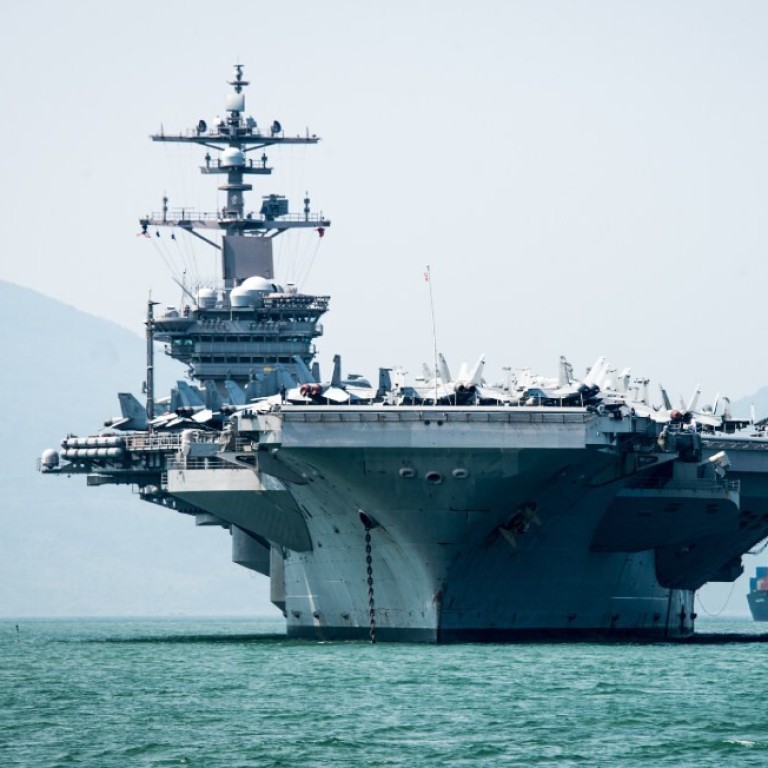
China-US tension: aircraft carrier tag team shows America strengthening Indo-Pacific presence
- Analyst questions whether the US will move its troops, equipment and weapon systems deployed in Afghanistan to the Indo-Pacific
- China’s military experts and shipbuilders closely watched the US Navy’s explosive full ship shock trial on the USS Ford for possible lessons
The Carl Vinson group, which received a major 17-month upgrade, including new F-35C Lightning II and CMW-22B Osprey aircraft, has been conducting drills near Hawaii with other combat units since last week as it prepares for an upcoming deployment to the Indo-Pacific region, according to a US Navy statement on Tuesday.
The Vinson’s training near Hawaii was seen as a show of US military presence in the region with the new deployment coming amid strains in the relationship between the US and China, the US Naval Institute reported on its website. American officials have repeatedly characterised China as the American military’s “pacing threat”.
“The deployment of two carrier strike groups – or one CSG and one expeditionary strike group supported by America-class amphibious assault ships in the region – became normal combinations for the US over the past two years,” Lu said.
“The most remarkable thing is, will the US move its troops, equipment and weapon systems they had deployed in Afghanistan to the Indo-Pacific in future.”
US Navy’s fleet woes means it’s ‘not ready to meet threat from China’: analyst
A US naval officer, who requested anonymity, told the South China Morning Post that part of the equipment, including military trucks and huge non-lethal assets, would be donated to local organisations in Afghanistan, while sophisticated weapons such as fighter jets and missile systems would be shipped to unspecified US bases.
According to the US Navy, the Reagan carrier will relieve the USS Dwight D Eisenhower strike group, which has operated in the Middle East since April and is on its second tour in a year.
Zhou Chenming, a researcher from the Beijing-based Yuan Wang military science and institute, said after the Afghanistan withdrawal mission, the Reagan carrier, which is based in Yokosuka in Japan, was expected to return to the region, but it would not be a threat to the People’s Liberation Army, unless the USS Gerald Ford new generation carrier was deployed.
“China has held FSST for its small and medium-size surface warships, but none of its huge warships, like the aircraft carriers Liaoning and Shandong, have done the explosive trial so far,” Zhou said, adding that China’s military experts, officials and shipbuilders were paying close attention to the American navy’s explosive trial on the Ford carrier.
“The FSST involved a lot of technical problems and subtle arrangements that need years of planning. China’s upcoming new-generation aircraft with similar electromagnetic catapult systems also need FSST, and it could learn from the experience of the explosive trial of USS Ford.”
EU to increase presence in Indo-Pacific under new strategy
The navy conducts shock trials involving the detonation of about 18 tonnes of live explosives – recorded by the US Geological Survey as a 3.9 magnitude earthquake. It aims to test whether new naval ships designs can continue to meet demanding mission requirements under harsh conditions the warships might encounter in battle.
It was the US Navy’s first aircraft carrier full ship shock trial in more than three decades, the navy said. The last one to be tested by the explosive trial was the USS Theodore Roosevelt in 1987.

